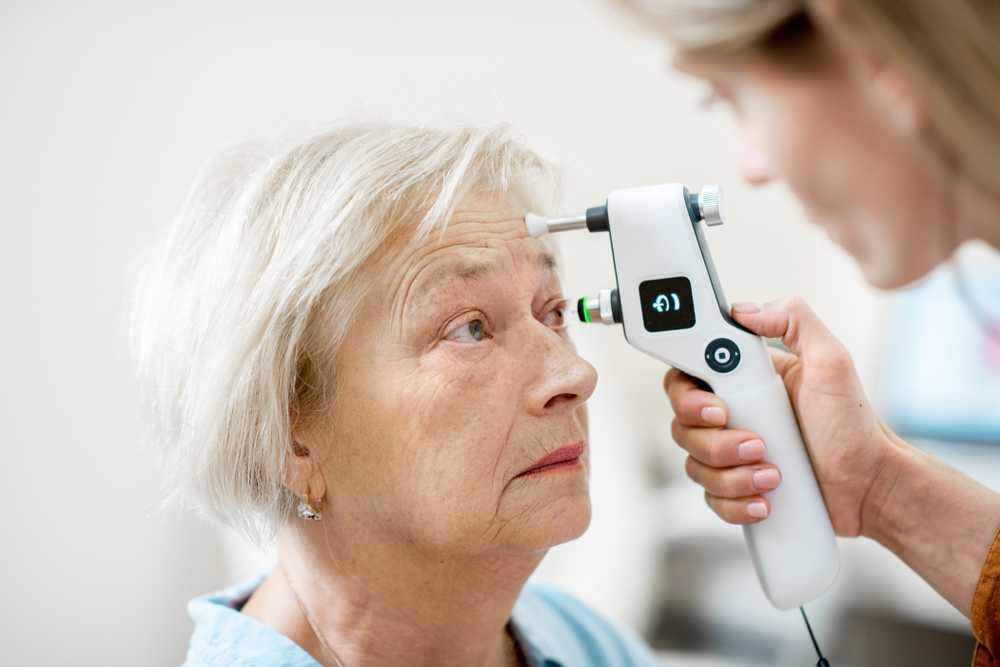
Home Tonometry for Management of Glaucoma
Glaucoma is a group of eye conditions that lead to damage of the optic nerve and vision loss. It is often referred to as “the silent thief of sight” since its symptoms are often subtle and may go unnoticed until significant damage has already occurred.
The most common cause of glaucoma is increased intraocular pressure (IOP), which can cause damage to the optic nerve. This is why the measurement of IOP is crucial for the management of glaucoma.
Traditionally, IOP has been measured in the doctor’s office using a tonometer. Tonometry is a quick and simple procedure where a small amount of pressure is applied to the eye to measure its resistance.
This information is then used to determine the IOP and whether it falls within a normal range. However, the traditional method of tonometry requires a visit to the doctor’s office, which can be time-consuming, inconvenient, and stressful for patients.
To address these issues, Home tonometry (HT) has emerged as a new way to monitor IOP. With HT patients can measure their IOP in the comfort of their own home, without having to make a trip to the doctor. This has many advantages, including reducing the need for frequent visits to the doctor, reducing anxiety, and providing patients with more control over their eye health.
How Home Tonometry Works
Home tonometry works by using a device that measures IOP by touching the eye. The device uses a soft, cushioned probe to apply a small amount of pressure to the eye, which is then measured and recorded. The results are then transmitted to a computer or other device for analysis.
There are several types of home tonometry devices available, including handheld tonometers and wearable devices. Handheld tonometers are the most common type of HT device and are relatively easy to use. They work by placing the probe on the eye and pressing a button to initiate the measurement. The results are displayed on the device, and can be recorded for later analysis.
Wearable devices, on the other hand, are designed to be worn for an extended period of time, usually 24 hours or more. These devices use a special probe that is attached to the eye, which measures IOP continuously over time. This type of device is especially useful for patients with glaucoma who require frequent monitoring of their IOP.
Benefits of Home Tonometry
Home tonometry offers several benefits over traditional tonometry. These include:
Convenience: Home tonometry (HT) allows patients to measure their IOP at any time, without having to visit the doctor’s office. This is especially useful for patients who live far from the doctor’s office or have difficulty traveling.
Cost savings: By eliminating the need for frequent visits to the doctor, home tonometry can save patients money on transportation and co-pay costs. Additionally, many insurance plans cover the cost of HT devices, making them a cost-effective option for many patients.
Improved accuracy: By measuring IOP more frequently, home tonometry can provide more accurate readings. This is especially useful for patients with fluctuating IOP levels, who may not have accurate readings during a single visit to the doctor.
Reduced anxiety: Home tonometry (HT) eliminates the need for patients to visit the doctor, reducing anxiety and stress. Additionally, some HT devices come with features such as step-by-step instructions and guided measurement procedures, making the process easier and less stressful for patients.
Better disease management: Home tonometry (HT) allows patients to monitor their IOP levels on a regular basis, giving them greater control over their eye health. This information can be used to make informed decisions about their treatment and to track their progress over time. Additionally, it can alert patients and their doctors to any changes in IOP, allowing for early detection and intervention.
Challenges of Home Tonometry
Despite the many benefits of home tonometry, there are also some challenges to be aware of. These include:
User error: One of the main challenges of home tonometry is the risk of user error. If the measurement is not taken correctly, the results may not be accurate. This can lead to incorrect treatment decisions and potentially cause harm to the patient.
Cost: Although home tonometry can be more cost-effective in the long run, the initial cost of purchasing a device can be high. This may not be a feasible option for all patients, especially those with limited financial resources.
Technical problems: Home tonometry devices are often complex and require a certain level of technical knowledge to use. If the device is not functioning properly, it may not provide accurate results. Additionally, if the device is not properly maintained, it may not function correctly.
Conclusion
Home tonometry (HT) is a new and innovative way to monitor IOP and manage glaucoma. With its many benefits, including convenience, cost savings, improved accuracy, and better disease management, it is an attractive option for many patients.
However, it is important to be aware of the challenges of home tonometry, including the risk of user error, the cost of purchasing a device, and technical problems. As with any medical device, it is important to discuss the benefits and risks of HT with your doctor to determine if it is the right choice for you.
Visit DocMode for Courses and lectures




